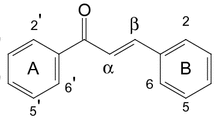Abstract
The purification of the MeOH extract from the rhizome of Sparganium stoloniferum Buch.-Hamil. (Sparganiaceae) using column chromatography furnished one new phenylpropanoid glycoside (7) and known phenolic compounds (1–6, and 8–13). The structural elucidation of 7 was based on 1D- and 2D-NMR spectroscopic data analysis to be β-d-(6-O-trans-feruloyl) fructofuranosyl-α-d-O-glucopyranoside. Compounds 1–6, and 8–13 were elucidated by spectroscopy and confirmed by comparison with reported data; 24-methylenecycloartanol (1), p-hydroxybenzaldehyde (2), ferulic acid (3), p-coumaric acid (4), vanillic acid (5), β-d-(1-O-acetyl-3-O-trans-feruloyl)fructofuranosy-α-d-2′,4′,6′.-O-triacetyglucopyranoisde (6), β-d-(1-O-acetyl-3,6-O-trans-diferuloyl)fructofuranosyl-β-d-2′,4′,6′.-O-triacetylglucopyranoisde (8), hydroxytyrosol acetate (9), hydroxytyrosol (10), isorhamnetin-3-O-rutinoside (11), n-butyl-α-d-fructofuranoside (12), and n-butyl-β-d-fructopyranoside (13). Compounds 3 and 9–13 were isolated for the first time from this plant. The isolated compounds were tested for cytotoxicity against four human tumor cell lines in vitro using a Sulforhodamin B bioassay.
Similar content being viewed by others
References
Capasso, R., Evidente, A., Avolio, S., and Solla, F., A highly convenient synthesis of hydroxytyrosol and its recovery from agricultural waste waters. J. Agric. Food Chem., 47, 1745–1748 (1999).
De Pascual Teresa, J., Urones, J. G., Marcos, I. S., Basabe, P., Sexmero, C., Maria, J., and Fernandez Moro, R., Triterpenes from Euphorbia broteri. Phytochemistry, 26, 1767–1776 (1987).
Gordon, M. H., Paiva, M. F., and Almeida, M., Antioxidant activity of hydroxytyrosol acetate compared with that of other olive oil polyphenols. J. Agric. Food Chem., 49, 2480–2485 (2001).
He, C. N., Wang, C. L., Guo, S. X., Yang, J. S., and Xiao, P. G., Study on chemical constituents in herbs of Anoectochilus roxburghii II. Chin. J. Chin. Mater. Med., 30, 761–763 (2005).
Hsu, H. Y., Oriental Materia Medica: A Concise guide., The Oriental Healing Arts Institute, Long Beach, CA, pp. 485, (1986).
Iiyama, K., Lam, T. B. T., and Stone, B. A., Phenolic acid bridges between polysaccharides and lignin in wheat internodes. Phytochemistry, 29, 733–737 (1990).
Jang, D. S., Han, A. R., Park, G., Jhon, G. J., and Seo, E. K., Flavonoids and aromatic compounds from the rhizomes of Zingiber zerumbet. Arch. Pharm. Res., 27, 386–389 (2004).
Jiangsu, New Medicinal College: Dictionary of Chinese Herbal Medicine, Shanghai People’s Publishing House, Shanghai, pp. 56, (1977).
Jung, S. H., Shin, K. H., Shin, H. K., and Lim, S. S., Effects of Sparganii rhizome processed on rat lens aldose reductase and anti-oxidant activities. Yakhakhoe Chi, 48, 291–296 (2004).
Lee, G. I., Ha, J. Y., Min, K. R., Nakagawa, H., Tsurufuji, S., Chang, I. M., and Kim, Y., Inhibitory effects of oriental herbal medicines on IL-8 induction in lipopolysaccharide-activated rat macrophages. Planta Med., 61, 26–30 (1995).
Li, S., Kuang, H., Yoshihito, O., and Okuyama, T., Chemical constituents of Bidens bipinnata (II). Zhong Cao Yao, 35, 972–975 (2004)
Miyaichi, Y., Matsuura, Y., Yamaji, S., Namba, T., and Tomimori, T., Studies on the constituents and anatomical characteristics of the Spargarnii Rhizoma Derived from Sparganium stoloniferum Buch.-Ham. Nat. Med., 49, 24–28 (1995).
Namba, T., Coloured Illustrations of Wakan-Yaku, Hoikusha Publishing, Osaka, (1980).
Nakano, K., Nishizawa, K., Takemoto, I., Murakami, K., Takaishi, Y., and Tomimatsu, T., Flavonol and phenylpropanoid glycoside from Lilium cordatum. Phytochemistry, 28, 301–303 (1989).
Osamu, S., Setsuko, S., Motoyoshi, S., Yan, N., and Hua, W., Chemical constituents of Chinese folk medicine “San Leng”, Sparganium stoloniferum. J. Nat. Prod., 59, 242–245, (1996).
Osamu, S., Setsuko, S., and Motoyoshi, S., Two phenylpropanoid glycosides from Sparganium stoloniferum. Phytochemistry, 44, 695–698 (1997).
Skehan, P., Storeng, R., Scudiero, D., Monks, A., Mcmahon, J., Vistica, D., Warren, J. T., Bokesch, H., Kenney, S., and Boyd, M. R., New colorimetric cytotoxicity assay for anticancer-drug screening. J. Natl. Cancer Inst., 82, 1107–1112 (1990).
Sun, L. X., Fu, W. W., Ren, J., Xu, L., Bi, K. S., and Wang, M. W., Cytotoxic constituents from Solanum lyratum. Arch. Pharm. Res., 29, 135–139 (2006).
Xiong, Y., Deng, K. Z., Guo, Y. Q., Gao, W. Y., and Zhang, T. J., Two new sucrose esters from Sparganium stoloniferum. J. Asian Nat. Prod. Res., 10, 425–428 (2008).
Zhang, C. Z., Xu, X. Z., and Li, C., Fructosides from Cynomorium songaricum. Phytochemistry, 41, 975–976 (1996).
Author information
Authors and Affiliations
Corresponding author
Rights and permissions
About this article
Cite this article
Lee, S.Y., Choi, S.U., Lee, J.H. et al. A new phenylpropane glycoside from the rhizome of Sparganium stoloniferum . Arch. Pharm. Res. 33, 515–521 (2010). https://doi.org/10.1007/s12272-010-0404-1
Received:
Revised:
Accepted:
Published:
Issue Date:
DOI: https://doi.org/10.1007/s12272-010-0404-1




